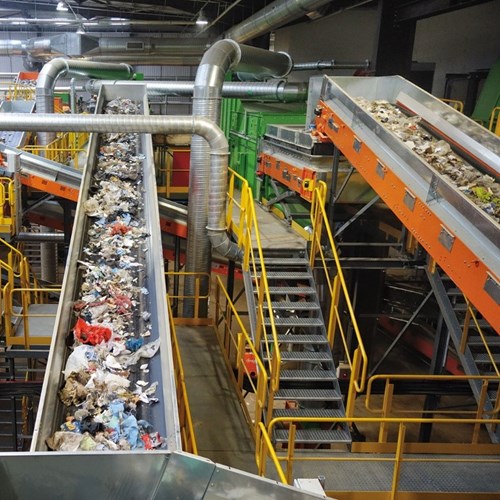
Here are some facts and figures to digest: The world population stands at 7.8 billion people in 2020, and it is projected to reach 9.9 billion by 2050. That’s a whopping 25% increase. Imagine the massive amount of resources required to sustain the population, which would also mean a corresponding increase in waste being produced. The need to adopt a circular economy approach is critical. This concept, which seeks to reduce waste, recover resources and channel them back into production, can lead the way to a more sustainable future.

A key aspect of a circular economy is effective waste management. Together with our consortium partners, we are designing and building part of Singapore’s first integrated waste management facility (IWMF) – comprising a Waste-to-Energy facility, and a Materials Recovery Facility – to meet the nation’s long-term plan to become a Zero Waste Nation and conserve precious resources.
Responsible for the construction of the Material Recovery Facility (MRF), power-island and the balance of plant, ST Engineering incorporates advanced technologies to sort 250 tonnes per day (tpd) of household recyclables, like metals, paper, cardboard and plastics, collected under the National Recycling Programme (NRP). The MRF will improve sorting efficiency and help boost Singapore’s domestic recycling efforts, bringing Singapore another step closer to realising its vision towards zero waste. The process is fully automated through the integration of Near Infrared (NIR) separators, with no handpicking needed to meet the required removal and purity specifications. The plant has built-in redundancy and the entire operations are centrally controlled and monitored, enabling greater visibility, synchronisation, connectivity and seamless controls.

Sorting of household recyclables in a Material Recovery Facility
Sustainability is an integral part of how we do business and we have a vital role to play in supporting the circular economy approach. Our deep domain expertise in environmental engineering and core competencies in managing large-scale engineering and critical infrastructure projects will be a great asset contributing to Singapore’s drive towards environmental sustainability.
The IWMF will be co-located with the Tuas Water Reclamation Plant (Tuas WRP) to collectively form the Tuas Nexus, for a more sustainable Singapore by optimising land use and harnessing synergies to further improve plant performance. Tuas Nexus will not only be energy self-sufficient but will also be able to export electricity to the grid. As compared to standalone incineration plants and used water reclamation plants, Tuas Nexus will achieve a land savings of up to 2.6 hectares - about the size of four football fields and a carbon savings of more than 200,000 tonnes of CO2 annually. This is equivalent to taking 42,500 cars off Singapore’s roads.
The design of the IWMF is another intricate process, carried out simultaneously by the consortium members, associated OEM and consultants, both from Singapore and around the world. Planning and design is integrated and shared virtually through collaboration tools for the team to work together seamlessly, enhancing productivity and efficiencies. 3D-modelling technologies are also utilised for the physical model of the plant, with additions of 4D to 6D information such as the project schedule and installation details.
Upon the first phase of completion in 2025, this flagship facility will be able to achieve greater environmental sustainability and provide Singapore with a state-of-the-art waste management system supporting the circular economy approach to ensure the nation’s long-term sustainability.
Copyright © 2025 ST Engineering
By subscribing to the mailing list, you confirm that you have read and agree with the Terms of Use and Personal Data Policy.